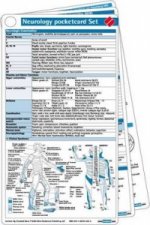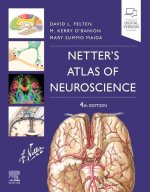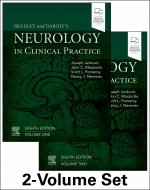
Kód: 05275223
Synaptic Plasticity and the Mechanism of Alzheimer's Disease
Autor Dennis J. Selkoe, Antoine Triller, Yves Christen
A biochemical hypothesis - that Alzheimer s disease (AD) is a progressive cerebral amyloidosis caused by the aggregation of the amyloid b-protein (Ab) - preceded and enabled the discovery of etiologies. This volume serves as a rec ... celý popis
- Jazyk:
 Angličtina
Angličtina - Vazba: Pevná
- Počet stran: 183
Nakladatelství: Springer-Verlag Berlin and Heidelberg GmbH & Co. KG, 2008
- Více informací o knize

5094 Kč

Skladem u dodavatele v malém množství
Odesíláme za 12-17 dnů
Potřebujete více kusů?Máte-li zájem o více kusů, prověřte, prosím, nejprve dostupnost titulu na naši zákaznické podpoře.
Přidat mezi přání
Mohlo by se vám také líbit
-

Master Pentatonic Scales For Guitar in 14 Days
410 Kč -

Moose Mischief: A Pancake Surprise!
502 Kč -

Reception of Laurence Sterne in Europe
11139 Kč -

Rosemariners
357 Kč -

Cambridge Urban History of Britain
9809 Kč -

Stokes Phenomenon and Hilbert's 16th Problem
3824 Kč -

Female Cunningness and Male Deception in Jane Austen's 'Northanger Abbey' and 'Sense and Sensibility' and in Henry Fielding's 'Tom Jones'
1084 Kč -

Development Cooperation - Evaluation and New Approaches.
1721 Kč -

What's New in Cardiovascular Imaging?
2258 Kč -

Youth Prolonged: Old Age Postponed
797 Kč -

Plays in Chinese (3)
508 Kč -

Die Krankheiten Der Nagel
1830 Kč -

Die Verwirrungen des Zöglings Törleß, 2 Audio-CD
449 Kč -

Kettlebell-Training, DVD
495 Kč
Dárkový poukaz: Radost zaručena
- Darujte poukaz v libovolné hodnotě a my se postaráme o zbytek.
- Poukaz se vztahuje na celou naši nabídku.
- Elektronický poukaz vytisknete z e-mailu a můžete ihned darovat.
- Platnost poukazu je 12 měsíců od data vystavení.
Více informací o knize Synaptic Plasticity and the Mechanism of Alzheimer's Disease
Nákupem získáte 509 bodů
 Anotace knihy
Anotace knihy
A biochemical hypothesis - that Alzheimer s disease (AD) is a progressive cerebral amyloidosis caused by the aggregation of the amyloid b-protein (Ab) - preceded and enabled the discovery of etiologies. This volume serves as a record focused on bringing together investigators at the forefront of elucidating the structure and function of hippocampal synapses with investigators focused on understanding how early assemblies of Ab may compromise some of these synapses. During most of the 20th century, neurodegenerative diseases remained among the most enigmatic disorders of medicine. The scientific study of these conditions was descriptive in nature, detailing the clinical and neuropathological phenotypes associated with various diseases, but etiologies and pathogenic mechanisms remained obscure. Beginning in the 1970s, advances in two principal areas biochemical pathology and molecular genetics combined to yield powerful clues to the molecular underpinnings of several previously "idiopathic" brain disorders. Among the classical neurodegenerative diseases, perhaps the most rapid progress occurred in research on Alzheimer s disease (AD). In disorders like Huntington s disease, amyotrophic lateral sclerosis and even Parkinson s disease, unbiased genetic screens, linkage analysis and positional cloning have identified causative genes that subsequently allowed the formulation of specific biochemical hypotheses. In sharp contrast, modern research on AD developed in the opposite order: the identification of the protein subunits of the classical brain lesions guided geneticists to disease-inducing genes, for example, APP, apolipoprotein E and tau. Thus, a biochemical hypothesis of disease - that AD is a progressive cerebral amyloidosis caused by the aggregation of the amyloid b-protein (Ab) - preceded and enabled the discovery of etiologies.§As progress in deciphering genotype-to-phenotype relationships in AD accelerated during the last two decades, it became apparent that the key challenge for understanding and ultimately treating AD was to focus not on what was killing neurons over the course of the disease but rather on what was interfering subtly and intermittently with episodic declarative memory well before widespread neurodegeneration had occurred . In other words, one wishes to understand the factors underlying early synaptic dysfunction in the hippocampus and then attempt to neutralize these as soon as feasible, perhaps even before a definitive diagnosis of AD can be made. This steady movement of the field toward ever-earlier stages of the disorder is exemplified by the recognition and intensive study of minimal cognitive impairment amnestic type (MCI; . And yet patients who die with a diagnosis of MCI have been found to already have a histopathology essentially indistinguishable from classical AD . Therefore, even earlier phases of this continuum are likely to become recognized, and these might show milder histopathology and might have biochemically, but not yet microscopically, detectable Ab species that mediate synaptic dysfunction. §This volume serves as a record focused on bringing together investigators at the forefront of elucidating the structure and function of hippocampal synapses with investigators focused on understanding how early assemblies of Ab may compromise some of these synapses.
 Parametry knihy
Parametry knihy
Zařazení knihy Knihy v angličtině Medicine Clinical & internal medicine Neurology & clinical neurophysiology
5094 Kč
- Plný název: Synaptic Plasticity and the Mechanism of Alzheimer's Disease
- Autor: Dennis J. Selkoe, Antoine Triller, Yves Christen
- Jazyk:
 Angličtina
Angličtina - Vazba: Pevná
- Počet stran: 183
- EAN: 9783540763291
- ISBN: 3540763295
- ID: 05275223
- Nakladatelství: Springer-Verlag Berlin and Heidelberg GmbH & Co. KG
- Hmotnost: 465 g
- Rozměry: 235 × 155 × 15 mm
- Datum vydání: 11. January 2008
Oblíbené z jiného soudku
-

The Reason I Jump
276 Kč -

NeuroTribes
464 Kč -

Marriage and Lasting Relationships with Asperger's Syndrome (Autism Spectrum Disorder)
511 Kč -

Gut and Psychology Syndrome
596 Kč -

Living Well on the Spectrum
638 Kč -

Oxford Handbook of Neurology
1225 Kč -

Early Start for Your Child with Autism
456 Kč -

1001 Great Ideas for Teaching and Raising Children with Autism or Asperger's
591 Kč -

Autistic Brain
462 Kč -

Topical Diagnosis in Neurology
1434 Kč -

Polyvagal Theory
1188 Kč -

101 Games and Activities for Children With Autism, Asperger's and Sensory Processing Disorders
382 Kč -

Neurology Pocketcard Set
188 Kč -

Women and Girls with Autism Spectrum Disorder
649 Kč -

Understanding and Overcoming Misophonia
349 Kč -

Neurology and Neurosurgery Illustrated
1791 Kč -

Fundamentals of Neurology
1848 Kč -

Aspergers and Adulthood
344 Kč -

Drug-Free Approach to Asperger Syndrome and Autism
546 Kč -

Autism
1365 Kč -

Female Brain
303 Kč -

You Can Fix Your Brain
553 Kč -

Stop Autism Now!
538 Kč -

Netter's Atlas of Neuroscience
1984 Kč -

Aspergirls
426 Kč -

Complete Guide to Asperger's Syndrome
607 Kč -

22 Things a Woman with Asperger's Syndrome Wants Her Partner to Know
382 Kč -

22 Things a Woman Must Know If She Loves a Man with Asperger's Syndrome
389 Kč -

Parent's Guide to High-Functioning Autism Spectrum Disorder
517 Kč -

PEERS (R) for Young Adults
1763 Kč -

Bobath Concept in Adult Neurology
1970 Kč -

Brainwashing
325 Kč -

Schema Therapy
1495 Kč -

Food Refusal and Avoidant Eating in Children, including those with Autism Spectrum Conditions
694 Kč -

Neuropsychological Assessment
6138 Kč -

Bradley and Daroff's Neurology in Clinical Practice, 2-Volume Set
11589 Kč -

Been There. Done That. Try This!
492 Kč -

Polyvagal Theory in Therapy / Clinical Applications of the Polyvagal Theory Two-Book Set
1682 Kč -

Neurofitness
839 Kč -

Neuro-Ophthalmology Survival Guide
2190 Kč -

Look Me in the Eye
410 Kč -

Every Word is a Bird We Teach to Sing
306 Kč -

Mind Diet Cookbook
395 Kč -

Neurological Examination Made Easy
634 Kč -

Neuroarchitecture
880 Kč -

K-Taping
2398 Kč -

In a Different Key
464 Kč -

Yoga Therapy for Children with Autism and Special Needs
766 Kč -

Practical Approach to Electroencephalography
2506 Kč
Osobní odběr Praha, Brno a 12903 dalších
Copyright ©2008-24 nejlevnejsi-knihy.cz Všechna práva vyhrazenaSoukromíCookies


 Vrácení do měsíce
Vrácení do měsíce 571 999 099 (8-15.30h)
571 999 099 (8-15.30h)